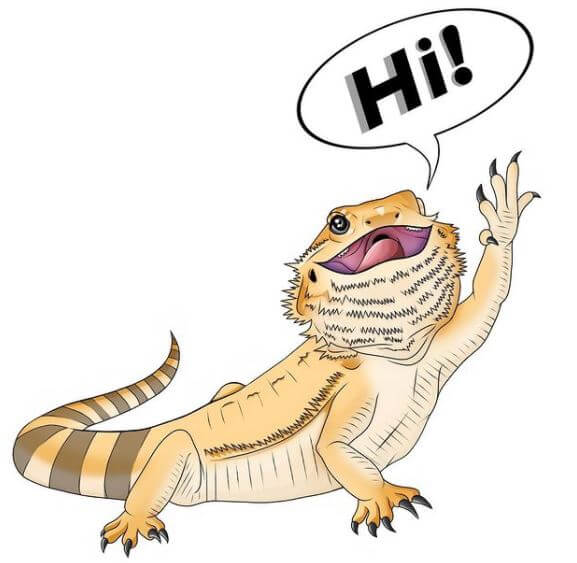Have you ever asked, “Why do bearded dragons wave? Why do bearded dragons bob their heads?”
For some reptile owners, a bearded dragon is such a delicate animal that they are worried about his behavior. Waving might not be the exception.
So, if you also have a similar question, let’s scroll down to find more information about your beardie!
Why do bearded dragons wave and bob their heads?
Related Posts:
- Can Bearded Dragons Eat Peas?
- Can You Transport a Bearded Dragon?
- How Big Can a Bearded Dragon Get?
- How Often to Trim Bearded Dragon Nails? A Detailed Guide
Why Do Bearded Dragons Wave and Bob Their Heads?
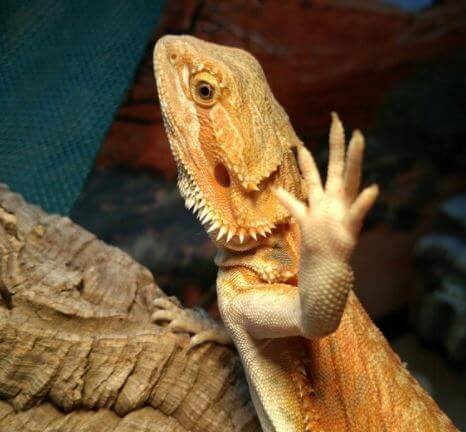
A bearded dragon waves when he wants to show a signal of submissiveness. That means he understands you are the boss.
Besides, if that is a female, waving is a signal of appealing to another male bearded dragon.
For some, they might wave for being scared of the outside environment.
Other less popular reasons may be the awareness of other living creatures, misunderstanding their reflections, or changes in the enclosures.
How Does Bearded Dragon Slow Wave Look Like?
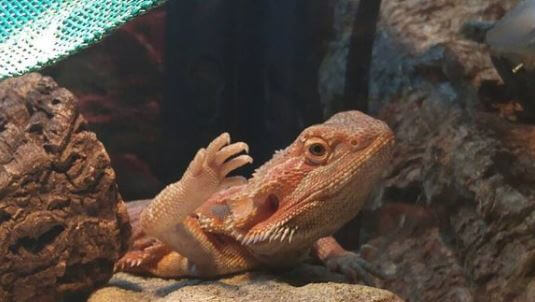
When I saw a bearded dragon waving, it was hard not to laugh.
She is relatively cute, with the front hands slowly lifting and putting down in a circular motion, her foot’s bottom exposed. It looked like she was welcoming you to her house with her special repeated dances.
However, when I have a deeper insight into the behavior’s purposes, I realized that it was not only a sweet gesture or her hospitality. More importantly, it might be a fear or violation signal.
Since then, it is crucial to understand the culprits behind the situation.
You can quickly make suitable adjustments to satisfy your pet.
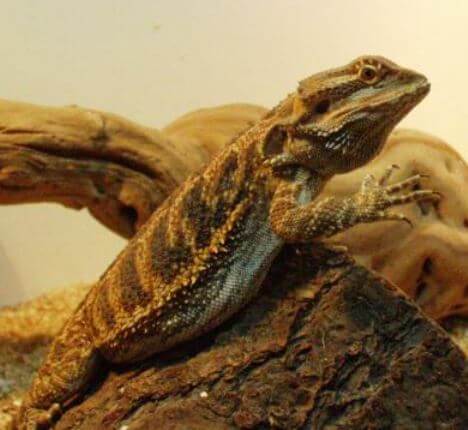
6 Reasons Why Bearded Dragons Wave and Bob Their Heads
1. Submissiveness
Most people reckon that a bearded dragon waves his arms because he is showing his submission.
That is to say, he understands who the boss is in the room.
The passive character of the reptile is the culprit of the case.
Perhaps he is too lazy or too smart to express any violated attitude to a more influential figure.
When I find out about the reason why bearded dragons wave, I suddenly thought about my dog and how he barks at everyone coming to our house.
That is such a vast difference in personality!
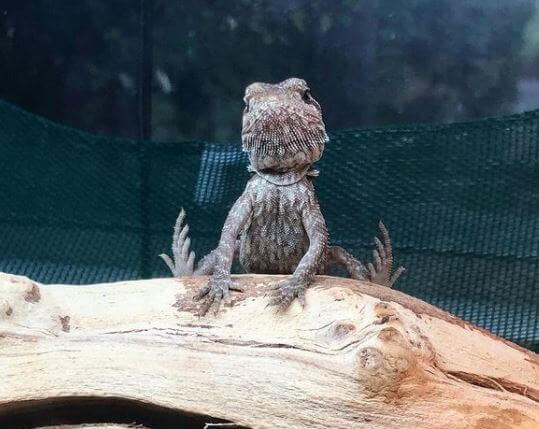
Besides, when the beardie has the gesture, he is always receptive to his owners. As in the wild, his nature let him how things work.
He tends to reckon you are the boss. After all, who would take care of him if he disobeys his owners?
Usually, bearded dragons wave when someone walks into the room.
Whether they are strangers or someone he knows, the feature is similar to a bow of respect.
Let’s take a look at this video to know when bearded dragons wave at his owner:
2. Mating
Secondly, another reason why bearded dragons wave their arms may be a signal of courtship ritual.
A female bearded dragon often waves to the male in the natural environment to let him know she is appealed.
However, rarely does a male wave arm attract his mates, either in the wild or at your house.
Other than that, he likely bobs his head and moves methodically around the shelter.
But, if you are taking care of a female and there are more than one bearded dragon, it is mainly because she has a love relationship.
Besides, she also shows other similar behaviors as males do.
Once the only gesture you see is her waving, that might not be mating behavior.
3. Awareness of Other Animals
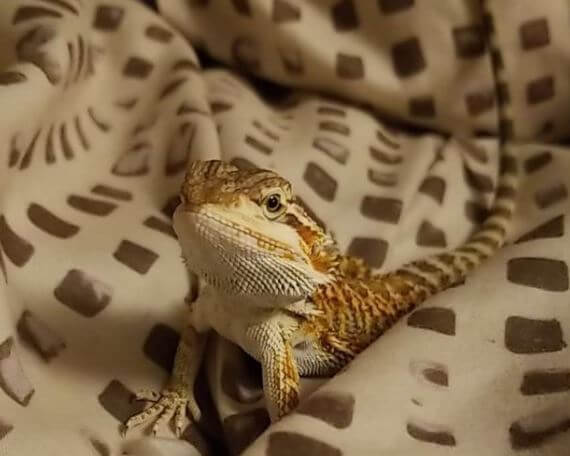
When a beardie notices a particular animal or people coming near his shelter or surroundings, he waves to tell them that he is there.
He has already known the stranger’s presence.
However, in some cases, a front leg is waved to show that he is scared.
When the people or animals make noisy sounds, move quickly, or come near the enclosure, he would put his hand up and down more than usual.
It’s when he is showing his fear and raising a white flag in front of a stronger rival.
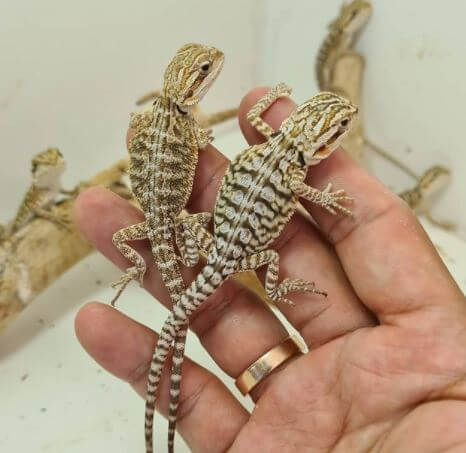
On the other side, if the strangers only pass by and do not make any annoyance, there might be a likelihood that he is just curious.
Think about a child who would wave his hands to you and even cry to let you know he wants to be hugged. Both cases are quite the same.
But, unlike screaming kids, if the person does not care for him, he would stop the gesture.
It’s just an occasional behavior to greet guests.
Some owners often do now allow strangers coming near the pet’s enclosure to understand the gesture.
In this case, beardies keep doing that whether there is someone or not. Then, awareness may not be the reason.
4. Fear
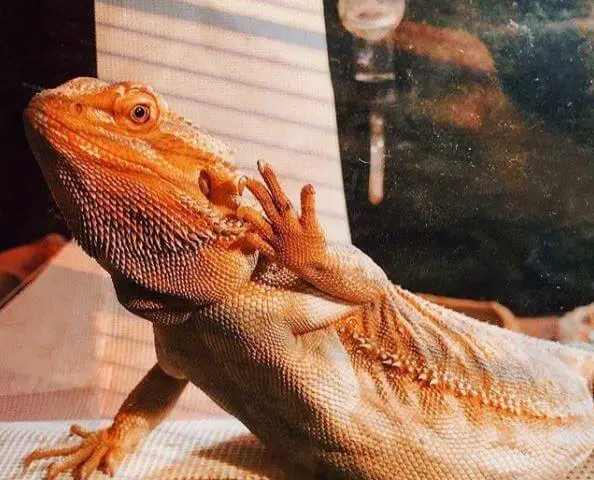
Like any reptile, a passive beardie is easily scared of overly curious and giant living creatures.
Especially when a dog or a cat continually runs too near his enclosure, he often reckons it is a danger.
Consequently, he waves his legs and arms to show that he is spooked by the stranger.
The situation even becomes worse if that is your kids.
Unlike mature pets, kids seem unconscious of the meaning of the signal.
They can think of the pet as their toys.
So, there is no weird if you see a child randomly move near the pet, smack, or even hit him. To my acknowledgment, not only does that scare the beardie, but it also is a threat to your babies.
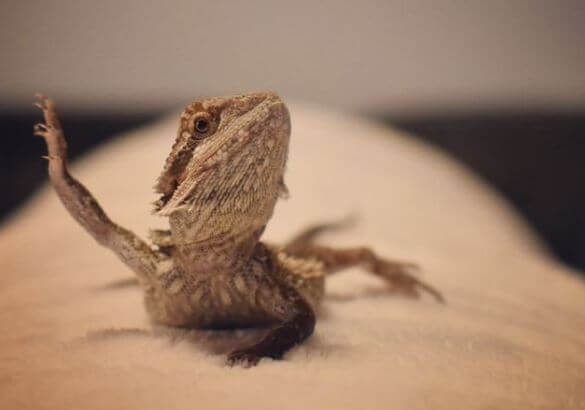
Noticing a nearby threat is a reason why you bearded dragons wave.
He is an omnivore.
While his fangs and claws cannot compare with carnivores, they are more than enough to protect him from the naughty kids.
Besides waving hands, his beard also turns black, and he puffs up.
He is trying to say, “Let me alone, please.”
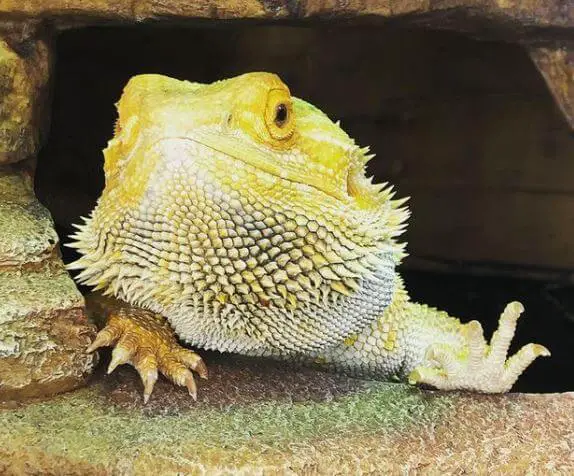
If you notice the bearded dragon’s signal, keep him away from strangers as soon as possible.
Move the shelter to a quiet place where he is not disturbed and stressed.
Out of normal taking-care activities, removing his fear and potential danger is your extra mission.
On the other hand, waving arms in front of his owners is not the fear but the welcome.
Do not mind the harmless and respect-based behavior.
5. Misunderstanding Their Reflections
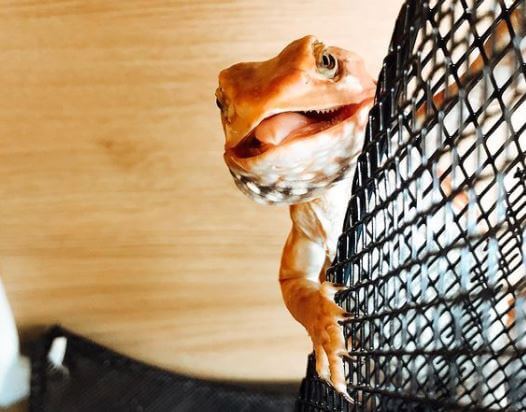
Although it sounds pretty hilarious from time to time, misunderstanding the reflections also is a possible reason.
Considering the specific bearded dragon cages, you would realize they are equipped with plastic or glass walls.
Those materials are helpful to keep the bearded dragon safe inside.
However, ironically, he sometimes thinks the reflection is another bearded dragon.
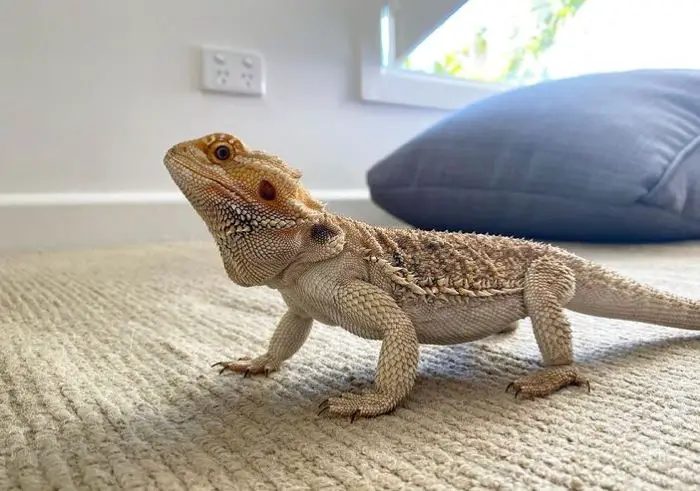
As a result, bearded dragons wave their legs to tell “hi” to the stranger.
Or, they might be scared. That is a signal of not wanting to fight.
After all, most owners cannot guess what they are thinking when waving to their mirroring.
In this situation, there is no need to be worried.
After a short time, they would stop waving when they realize the beardies are just fake ones. After all, how could a thought damage an actual living creature?
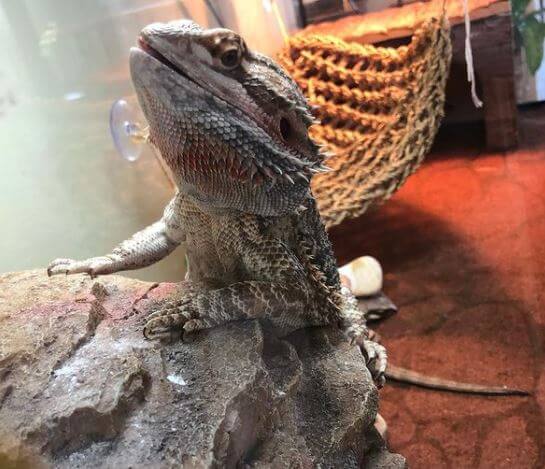
However, for some careful owners, it is crucial to let them know that there is no threat to the walls.
Therefore, they try to adjust the light’s position in their house and the bearded dragon’s enclosure.
Moreover, it is also helpful if you check humidity, temperature, and lighting.
Few and far between, beardies may be frustrated with the condition surrounding them.
6. A New Environment
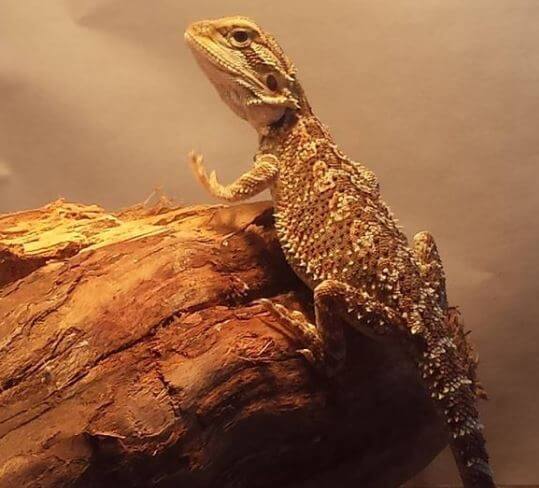
Last but not least is the small location changes. In nature, bearded dragons tend to stay in a determined place for all of their life.
They only move to a new site for inevitable reasons such as natural disasters or lacking food.
The instinct also drives him when he is a pet.
However, some inexperienced owners do not understand the fact and keep relocating his house.
As a result, he often shows some strange signals like waving front legs.
He might feel it hard to get used to the new enclosure. To solve the problem, keep him in a place for a long time.
Then, he would gradually stop waving over time.
Why Do Bearded Dragons Wave at Crickets?
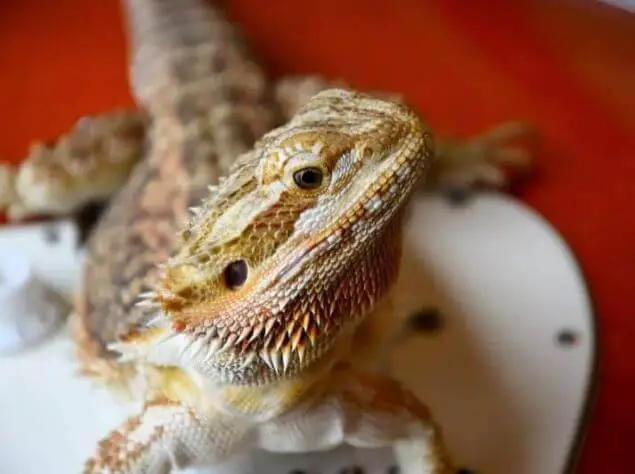
I have given lots of such questions, so I would like to explain why bearded dragons wave their legs to crickets.
Typically, when you feed them with crickets, they have to pretend to be friends first.
Especially with inexperienced beardies like juveniles or babies, they even wave more than usual.
The fact has its roots in their worry and excitement.
After a few times of arm-waving, they will attack the prey as usual.
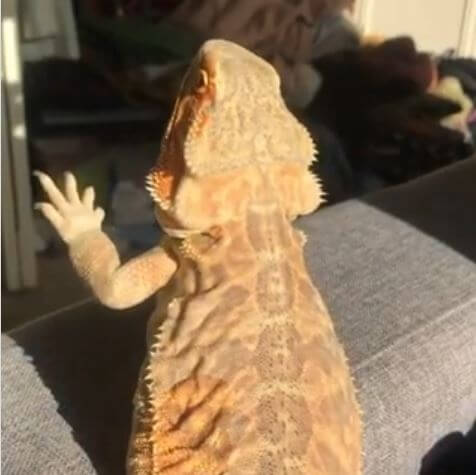
Additionally, a bearded dragon could be frightened because too many crickets are around at the same time.
They wave to show their presence, as well as their fear.
To reduce the risk, it would help if you diminish the number of crickets at a time.
From five to seven preys might be more than enough for your bearded dragon.
Furthermore, he might be scared when facing such a giant cricket.
A few large prey might force him to raise his white flag instead of eating them.
If you are a newcomer and still not confident in feeding those dragons, try to use a bowl with covers above.
Remember to make a hole in the lid so your pet can put his head and legs into the bowl.
What Should You Do If a Bearded Dragon Never Waves?
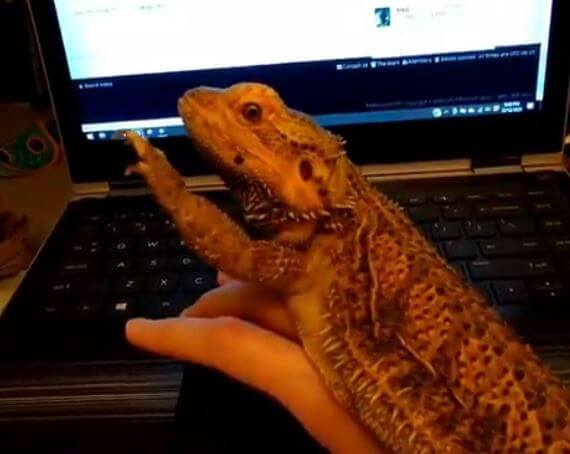
There is nothing to worry about. The only reason might result from his natural habit: He is not interested in redundant activity.
For some, it is abnormal when their pet does not wave hands like other ones.
Why do you have to bother if your kid does not act like other kids?
Like human beings, each pet has its character, and you should not force them to do something you like. It is illegal in emotional legislation.
In a nutshell, my advice is just to let him do what he wants.
There’s nothing inaccurate or problematic with the not-waving behavior.
Frequently Asked Questions About Why Bearded Dragons Wave and Bob Their Heads
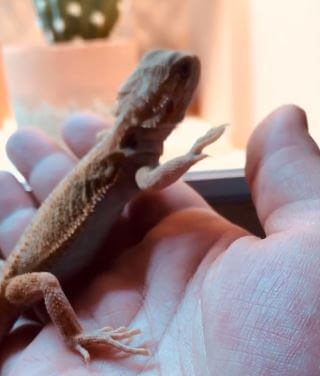
1. How to Teach Bearded Dragons to Wave?
Although it is not essential if a bearded dragon rarely waves, there are some methods you can try to teach him to do the act.
Beardies often wave to welcome you and show your submission.
So, you can try to feed him or reward him with whatever he likes when he makes the gesture.
Like training other animals, you need to do that many times.
Until he links the motion with delicious meals, he would wave whenever you show him food.
2. Should You Wave Back at Your Bearded Dragon?
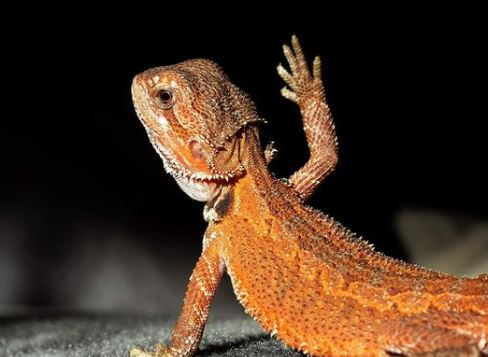
Of course, you can wave back to your little beardie.
For some, they would feel comfortable due to your response.
The worse situation is that they would be a bit annoyed. But, overall, there is no harm in the reply gesture.
3. Is It Bad If Bearded Dragons Wave?
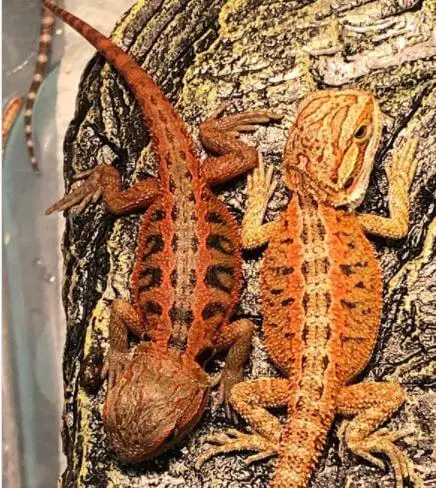
As I have just mentioned, there are a few reasons why bearded dragons wave and lift their arms.
At worst, he might be scared, which results from the abnormal outside environment.
Solving the problem helps him feel safe and less stressed by reducing the number of strangers around his enclosures.
Plus, if that is a noisy sound, turning it off would be best.
4. Why Does My Bearded Dragon Wave His Arm at Me?
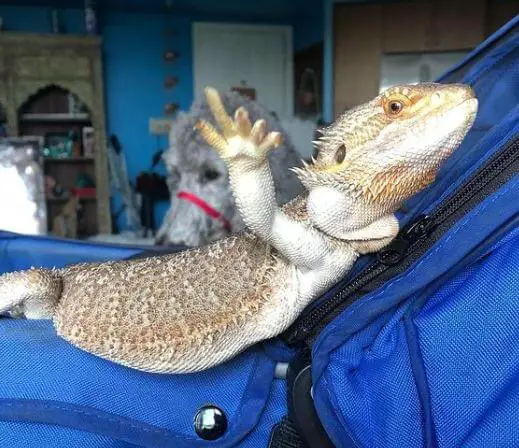
It is mainly because he is showing a submissive sign. You feed him and take care of him.
Cleverly, he understands that he should be obedient and in a beta position.
By contrast, when he bobbed his head, it is a sign of being ready to attack prey or dangers.
Be careful with the gesture instead.
Conclusion
In summary, above are some critical pieces of knowledge related to the reasons why bearded dragons wave.
It is a specific gesture to show his submission or his awareness of other animals. Plus, it could have roots in mating behavior when those are females.
Moreover, they might be feeling scared or annoyed with the small changes in the enclosure. For some, they might misunderstand their reflections alike.
Through the article, I hope you can have a deeper insight into your beardies’ indications.
Key take away points for why do bearded dragons wave:
Bearded dragons are known for their fascinating behaviors, one of which is the “waving” or “arm-waving” display. This behavior can be both intriguing and a bit puzzling to reptile keepers. Below, we delve into the reasons behind bearded dragon waving, breaking it down into bullet points for quick comprehension:
1. Communication with Conspecifics:
- Submissive Gesture: Waving is often observed when a bearded dragon encounters another dragon, particularly one they perceive as dominant. It’s a submissive signal meant to avoid confrontation or assert their lower status.
2. Territory Assertion:
- Establishing Boundaries: Bearded dragons may also wave to delineate territory boundaries when placed near another dragon or in a new enclosure. It’s a way of saying, “This spot is mine.”
3. Recognition of a Threat:
- Response to Perceived Danger: Bearded dragons can wave when they feel threatened or alarmed, especially when confronted by a larger or unfamiliar animal.
4. Mating Behavior:
- Courtship Ritual: During the mating season, male bearded dragons may display the waving behavior as part of their courtship ritual to attract females. It can be seen as a way of saying, “I’m interested.”
5. Curiosity and Exploration:
- Non-Aggressive Gesture: Sometimes, waving can be a form of non-threatening curiosity. Bearded dragons may wave their arms when exploring new objects or situations.
6. Responses to Mirror Reflections:
- Self-Recognition: Bearded dragons may wave when they see their reflection in a mirror. They may perceive their own reflection as a potential intruder or rival.
7. Social Interaction:
- Communication Among Dragons: When two bearded dragons are kept together, they might wave at each other as a form of social interaction. This is generally considered normal behavior when dragons cohabitate peacefully.
8. Individual Variation:
- Personality and Context: Not all bearded dragons wave, and the frequency of waving can vary between individuals. It’s essential to consider the context and your dragon’s overall behavior.
9. Stress and Anxiety:
- Waving as a Stress Response: In some cases, excessive waving can be a sign of stress or discomfort. It’s crucial to assess your dragon’s environment and make adjustments if necessary.
10. Age and Sexual Dimorphism:
- Males vs. Females: While both male and female bearded dragons can wave, males tend to display this behavior more often and vigorously. It’s more commonly associated with male dragons.
11. Observational Learning:
- Social Learning: Bearded dragons may pick up waving behavior through observation of other dragons. This is particularly relevant in cohabitation scenarios.
12. Calm Down and Relaxed Posture:
- Waving Resolution: In some cases, when the situation or perceived threat subsides, a bearded dragon may lower its arm and adopt a more relaxed posture.
Understanding the reasons behind bearded dragon waving can help you interpret their behavior and address their needs. While it’s a common behavior, excessive or prolonged waving can indicate stress, so it’s essential to ensure your dragon’s enclosure and social interactions are suitable for their well-being. Always consult with a reptile-savvy veterinarian if you have concerns about your bearded dragon’s behavior.
Further Reading:
- Carolina Custom Cages Terrarium Review
- 8 Best Basking Rocks for Beardie: What Is the Best Choice?
- 10 Best Thermometers for Beardie: How to Choose the Best One?
- 5 Best Beardie Lighting Setups for Beardie Lovers
- 9 Best Heat Lamps for Beardie: Natural Habitat Provided

